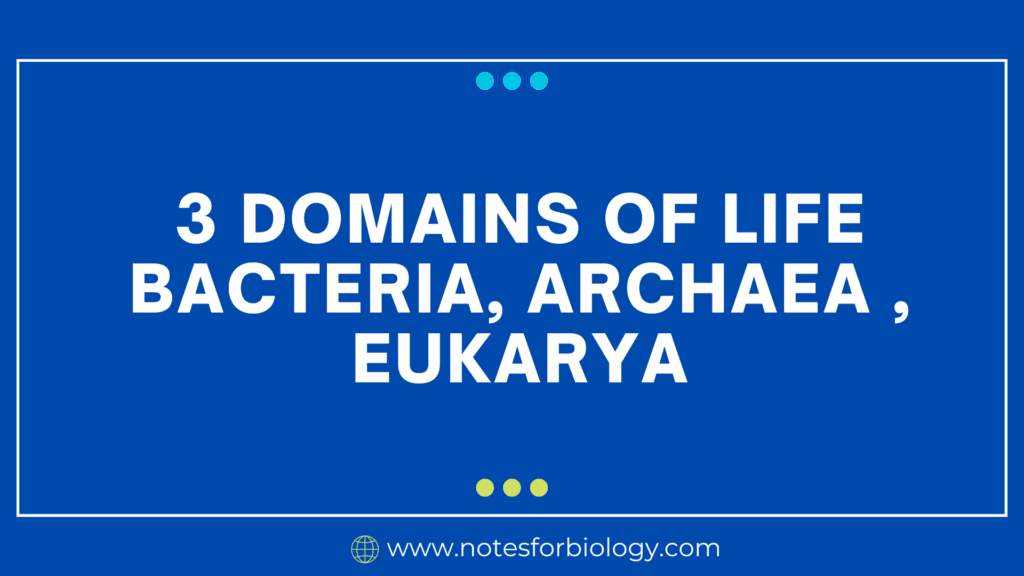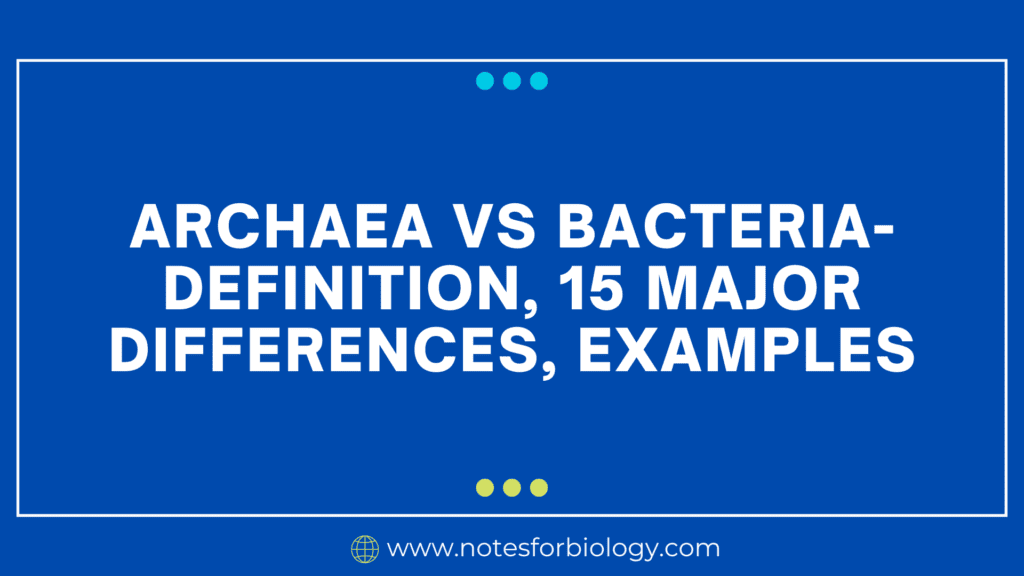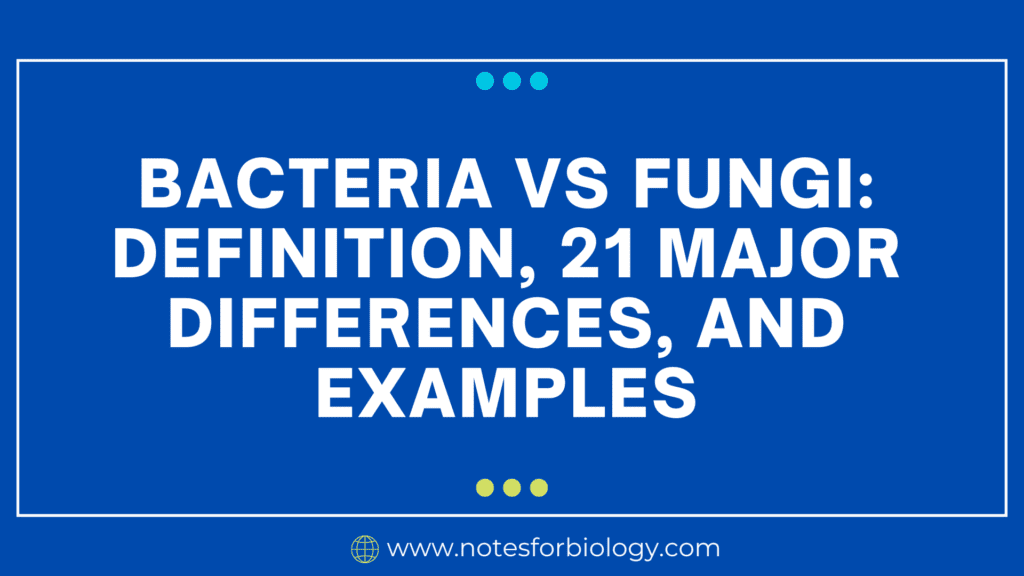Domains of Life : Bacteria
Bacteria are microscopic, one-celled organisms. Bacteria come in millions of different varieties. Numerous substances that are good for you can be found in and on your body. Your microbiome, which is made up of these bacteria, maintains the health of your body. You can become ill from other bacteria. Antibiotics are used by medical professionals to treat a variety of bacterial infections.
Table of Contents
Definition of Bacteria
Bacteria are unicellular organisms that belong to the prokaryotic group, where the organisms lack some organelles and a true nucleus
Bacteria are single-celled, prokaryotic microorganisms that are distinguished by their simple cell structure, variety of shapes, metabolic potential, and capacity to live in a variety of environments. They are also devoid of a membrane-bound nucleus and organelles.
Advantage of Bacteria
1. Environmental Role
- Decomposition
- Nitrogen Fixation
- Bioremediation
2. Health and Medicine
- Gut Flora: Aid in digestion, produce vitamins (e.g., vitamin K and B vitamins), and protect against pathogenic microbes
- Probiotics: Improve gut health and boost the immune system
- Antibiotic Production: Some bacteria produce antibiotics used to treat bacterial infections
3. Industrial
- Food Production
- Biotechnology
- Waste Treatment
4. Agriculture
- Pest Control: Certain bacteria act as natural pesticides, reducing the need for chemical pesticides
- Biofertilizers: Enhance soil fertility and plant growth by fixing nitrogen, decomposing organic matter, and solubilizing phosphorus
Disadvantage of Bacteria
1. Pathogenic Bacteria
Diseases
Many bacteria cause diseases in humans, animals, and plants. For instance, Mycobacterium tuberculosis causes tuberculosis, and Vibrio cholerae causes cholera.
Infections
Bacterial infections can be severe and sometimes life-threatening. Examples include bacterial meningitis, strep throat (caused by Streptococcus bacteria), and urinary tract infections.
2. Antibiotic Resistance
Resistance Development
Bacteria can evolve resistance to antibiotics, making infections harder to treat. Methicillin-resistant Staphylococcus aureus (MRSA) is a well-known example.
Superbugs
Multidrug-resistant bacteria, often referred to as “superbugs,” pose a significant public health challenge due to limited treatment options.
3. Food Spoilage and Contamination
Foodborne Illnesses
Bacteria such as Salmonella, E. coli, and Listeria can contaminate food, leading to foodborne illnesses.
Economic Loss
Spoilage caused by bacterial contamination can result in substantial economic losses in the food industry.
4. Environmental Contamination
Water Quality
Bacterial contamination of water sources can lead to outbreaks of diseases such as cholera and dysentery.
Bioremediation Challenges
While some bacteria are used in bioremediation, others can hinder these processes or produce harmful byproducts.
4. Agricultural Impact
Plant Diseases
Bacterial infections can devastate crops, reducing yield and quality. For example, bacterial blight and wilt diseases can severely impact agricultural productivity.
Animal Health
Livestock can suffer from bacterial infections, resulting in economic losses for farmers and impacting food supply.
Chronic Conditions
Some bacteria, such as Helicobacter pylori, are linked to long-term health conditions like stomach ulcers and certain types of cancer.
Different Types of Bacteria
Spherical (Cocci)
The shape of these bacteria resembles a ball. One example is the streptococcus group, which is responsible for illnesses like “strep throat.”
Rod-Shaped Bacilli
Bacilli have a cylindrical, extended shape. Some might have a vibrio, or curvature. For example, anthrax is caused by Bacillus anthracis.
Spiral (Spirill )
The shape of these bacteria is spiral. They are known as spirochetes if the coil is tight. Spirilla-shaped bacteria are the cause of diseases like syphilis, Lyme disease, and leptospirosis.
Domains of Life Archaea
Archaea are a group of single-celled microorganisms that constitute one of the three domains of life, alongside Bacteria and Eukaryota. They are prokaryotic organisms, meaning they lack a cell nucleus and membrane-bound organelles like mitochondria and chloroplasts. Instead, Archaea have a single circular chromosome and typically contain plasmids (small, circular DNA molecules)
Definition of Archaea
Archaea are prokaryotic forms of life sharing some features with bacteria and other features with eukarya. Archaea constitute one major domain of life and comprise only single-celled organisms devoid of nuclei.
Example of Archaea
| Character | Archaea |
| Habitat/Ecology | Often extreme environments as well as normal |
| Cellular Organization | Unicellular |
| Cell Organelles | No membrane bound cell organelles |
| Cell Wall Composition | different polysaccharides, and glycoconjugates |
Domains of Life Eukarya
It’s one of the three domains of life, alongside Bacteria and Archaea. It includes all organisms composed of eukaryotic cells, which are characterized by having a defined nucleus enclosed by a membrane, as well as membrane-bound organelles such as mitochondria and chloroplasts (in plants and algae). Organisms within the domain Eukarya encompass a vast range of life forms, including plants, animals, fungi, and protists.
Example:
plants, animals, protists, fungi
Characteristics of Eukaryotic
> The nucleus of eukaryotic cells is enclosed by the nuclear membrane.
> Mitochondria are present in the cell.
> Flagella and cilia serve as the motility structures in a eukaryotic cell.
> The outermost layer of eukaryotic cells is known as a cell wall.
> Mitosis is the process by which cells divide.
> Eukaryotic cells have a cytoskeleton.
> All genetic information is carried in a single, linear DNA within the nucleus
Frequently Asked Question
What are the domains of bacteria?
The Archaea, Bacteria, and Eukarya are the three domains. Eukaryotic species are classified under the category Eukarya, whereas prokaryotic organisms fall under the domains of Bacteria or Archaea.
What are the three domains of Bacteria Archaea and Eukarya?
The three realms of life on Earth are Bacteria, Archaea, and Eukarya. The first two are made entirely of single-celled microorganisms. They are all devoid of a nucleus. Eukarya, the third domain, is made up of creatures with nuclei in their cells.
What are the 3 domains of all life ?
Introduced by Carl Woese, Otto Kandler, and Mark Wheelis in 1990, the three-domain system is a taxonomic categorization scheme that divides all cellular life into three domains: Archaea, Bacteria, and Eukarya.
What are three examples of Eukarya?
Muscle cells
Stem cell
Bone cells
Cancer cells
Plant cells
Meristematic cells
Ova
Fungal cells
Related Article



